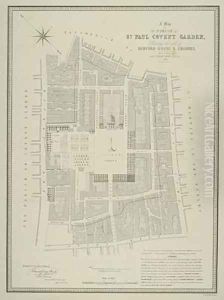Willian Leybourn Paintings
William Leybourn was an English mathematician, surveyor, and author, active during the 17th century, a period that was rich in scientific discovery and innovation. Born in 1626, Leybourn's contributions spanned several disciplines, but he is perhaps best remembered for his work in surveying and mathematics, disciplines that were closely intertwined during his lifetime. His career unfolded during a time when England was undergoing significant social, political, and scientific transformations, which included the English Civil War, the Interregnum, and the Restoration of the monarchy under Charles II.
Leybourn's work in mathematics and surveying was not just theoretical but also immensely practical. He published numerous books and treatises on these subjects, which were instrumental in the development of surveying as a profession in England. His publications covered a wide range of topics, from geometry and trigonometry to the more practical aspects of surveying lands and properties. Among his notable works is 'The Compleat Surveyor,' first published in 1653, which served as a comprehensive guide for surveyors for many years. The book detailed methods for measuring land, calculating areas, and even touched upon astronomical observations, reflecting the broad scope of Leybourn's expertise.
Beyond his contributions to mathematics and surveying, Leybourn was involved in the broader scientific community of his time. He engaged with many of the leading figures in science and mathematics, contributing to the intellectual exchanges that were crucial to the era's scientific advancements. Despite the tumultuous periods of the English Civil War and the Plague, Leybourn's work remained influential, and he continued to publish and teach throughout his life.
William Leybourn's legacy extends beyond his published works. He was a key figure in the establishment of surveying as a recognized profession in England, laying the groundwork for future generations of surveyors and mathematicians. His efforts in education, particularly in the dissemination of mathematical and surveying knowledge, helped elevate these fields to a more formal and respected status. Leybourn passed away in 1716, leaving behind a body of work that would continue to influence the fields of mathematics and surveying for centuries to come. His contributions are a testament to the intellectual fervor of the 17th century and the early modern period's advancements in science and mathematics.
